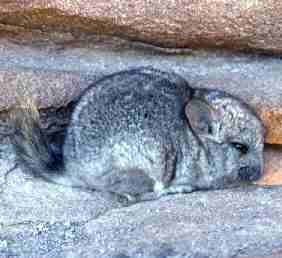Facts About Short-tailed chinchilla
The short-tailed chinchilla, also known as the Bolivian, Peruvian, or royal chinchilla, is an endangered rodent endemic to South America. This species is one of two types of chinchillas within the genus Chinchilla. Historically, they were widespread across the Andes Mountains in Argentina, Chile, Peru, and Bolivia, but their populations have dramatically declined due to the high demand for their luxurious fur. The long-tailed chinchilla, the other species within this genus, shares a similar fate and is the wild ancestor of the domestic chinchillas commonly kept as pets today.
Short-tailed chinchillas are characterized by their compact size, with bodies measuring between 28 to 49 centimeters and a weight range of approximately 38 to 50 ounces. True to their name, they possess shorter tails compared to their long-tailed counterparts. Adapted to the cold climates of their natural habitat, these chinchillas have incredibly dense fur to ward off the chill. They seek shelter in burrows and primarily subsist on a diet of vegetation. These social animals live in colonies, which offer them protection and companionship.
The fur industry has had a devastating impact on chinchilla populations. Commercial hunting commenced in 1829, severely reducing their numbers. Although hunting was prohibited in 1929, effective enforcement did not begin until 1983. Early conservation initiatives in Chile during the 1890s were poorly managed and failed to halt the population decline. It wasn't until 1910 that international efforts to ban hunting began to gain traction. Today, both short-tailed and long-tailed chinchillas are listed as endangered by Chile and the International Union for Conservation of Nature (IUCN).
Fortunately, successful captive breeding programs have alleviated some pressure on wild populations, reducing the need for hunting. Conservation laws are now in place to protect these species, ensuring their survival for future generations.

 Uruguay
Uruguay